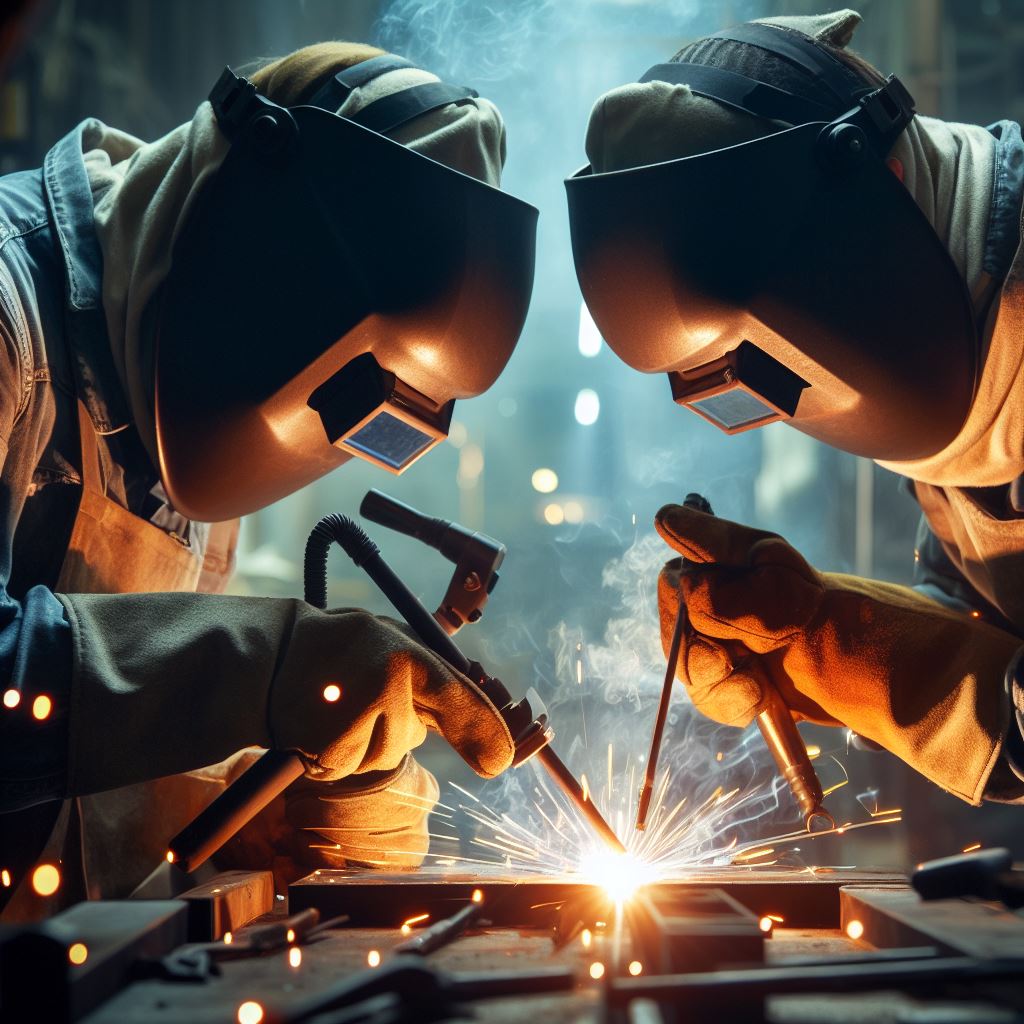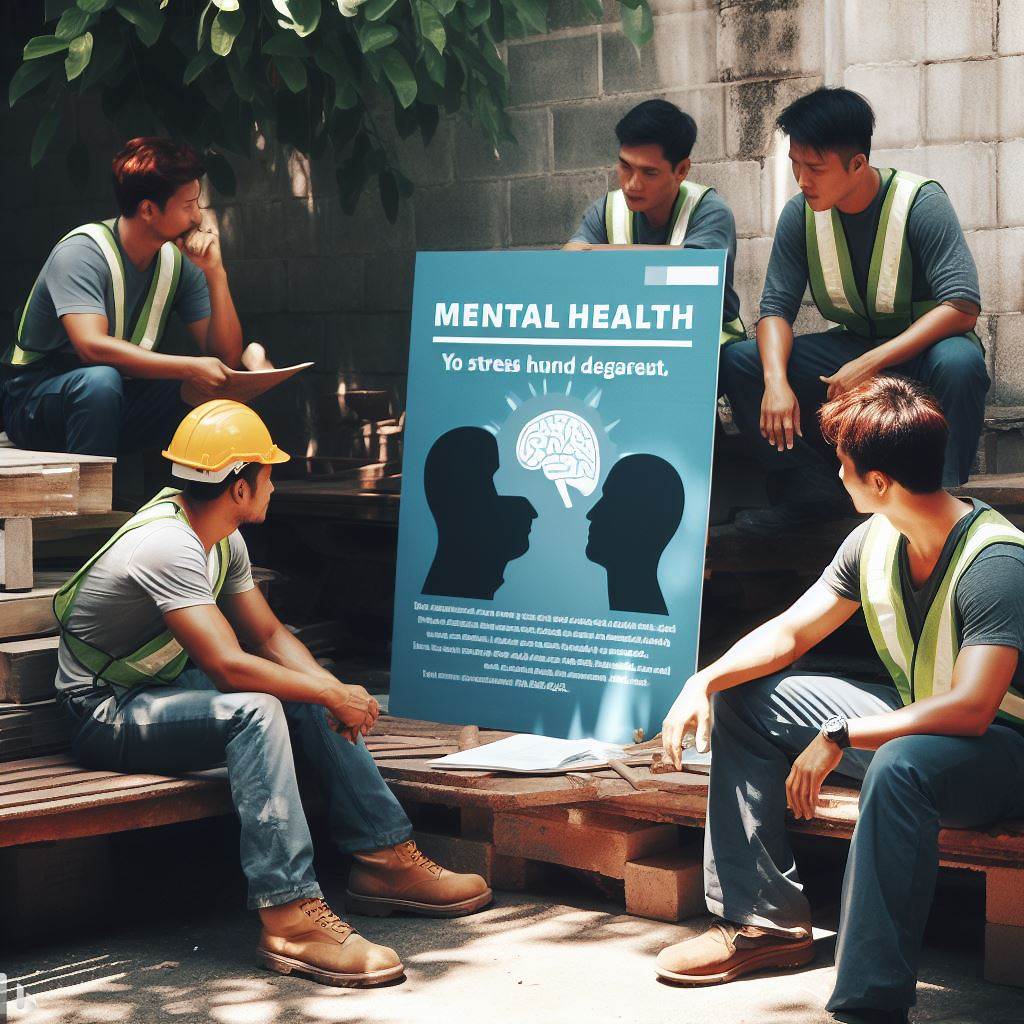Introduction
Work-life balance is finding an equilibrium between work and personal life.
It is important as it allows individuals to prioritize and manage their responsibilities effectively.
Brief Explanation of Work-Life Balance:
- Work-life balance is pivotal for welders, ensuring a harmonious life beyond their welding helmets.
- It’s about juggling welding tasks with personal life, family, hobbies, and downtime effectively.
- This equilibrium prevents burnout, sustains mental health, and fosters a fulfilling lifestyle.
Importance of Work-Life Balance:
- Mental Well-being: Balancing work and life reduces stress and maintains mental well-being.
- Enhanced Productivity: It rejuvenates welders, enhancing work productivity during welding projects.
- Quality Family Time: A balanced life means quality family time, creating stronger bonds.
- Health and Fitness: It allows for time to focus on fitness and health routines.
- Prevents Burnout: Avoiding overwork safeguards against burnout and chronic fatigue.
- Hobbies and Interests: Pursuing hobbies and interests outside of welding adds a sense of fulfillment.
- Professional Growth: A rested welder is better equipped for professional growth and skill development.
- Community Engagement: A balanced life permits community engagement and social interactions.
- Better Decision-Making: With a clear mind, welders make better decisions in their work and life.
- Overall Happiness: Work-life balance contributes to an overall happier and more satisfied life.
In the life of an American welder, work-life balance isn’t a luxury but a necessity. It fuels their passion for welding while nurturing their personal lives.
In the chapters ahead, we’ll explore how welders navigate this delicate equilibrium, ensuring they remain dedicated to their craft while savoring the joys of life beyond the welding booth.
Overview of a welder’s profession
Definition and role of a welder
- A welder is a skilled professional responsible for joining metals together using various techniques.
- The role of a welder involves fabricating and assembling metal structures or equipment.
Key skills and qualifications needed
- Proficient in reading and interpreting blueprints, diagrams, and welding symbols.
- Expertise in operating and maintaining welding equipment, such as TIG, MIG, or arc welders.
- Strong manual dexterity and hand-eye coordination for precise welding work.
- Knowledge of different types and grades of metals, as well as their properties.
- Ability to follow safety protocols and adhere to welding codes and regulations.
- Certifications or relevant vocational training in welding techniques and procedures.
Work environment and responsibilities
- Welders work in a variety of settings, including manufacturing plants, construction sites, and repair shops.
- They may also work outdoors, often in challenging weather conditions.
- Welders are responsible for preparing metal surfaces, cleaning and removing impurities.
- They set up welding equipment, adjust settings, and select appropriate welding techniques.
- Welders use heat and electricity to melt and fuse metals together, creating strong bonds.
- They inspect welds for quality, ensuring they meet the required specifications and standards.
- Welders may have to perform repairs on existing structures or equipment.
- They often collaborate with engineers, fabricators, and other professionals to complete projects.
- Ensuring proper safety measures are followed throughout the welding process is a critical responsibility.
A welder’s life demands technical skill, physical endurance, and practical knowledge. It’s a challenging yet fulfilling journey.
Welders begin their day by reviewing work orders and gathering materials. Safety is paramount, with thorough hazard checks and proper protective gear.
Once set up, they weld with intense focus, controlling the torch, applying heat, and filler material with precision.
Periodic inspections ensure quality standards. Effective teamwork is crucial for successful project completion.
At the day’s end, welders maintain equipment and tidy their workspaces. This profession offers stability, job satisfaction, and growth opportunities.
Welding is a dynamic field, requiring continuous learning. In summary, it’s a demanding but rewarding career.
Read: Building Codes and Standards: Carpenter’s Compliance Guide
A typical day in the life of an American welder
Morning routine
- Waking up early.
- Preparing for the day.
- Commuting to work.
Work on-site
- Ensuring safety measures are in place.
- Reviewing project instructions.
- Gathering necessary equipment and materials.
- Beginning welding tasks.
Breaks and downtime
- Importance of taking regular breaks.
- Engaging in physical activities during breaks.
- Socializing with colleagues.
Work hours and shifts
- Full-time and part-time work options.
- Flexibility of scheduling.
- Overtime and its impact on work-life balance.
End of the workday
- Finishing tasks and clean-up.
- Transitioning back to personal life.
- Reflecting on the day’s work.
As an American welder, each day starts with an early morning routine.
Waking up early allows us to prepare for the day ahead. Once we are ready, we commute to the worksite, where we spend the majority of our time.
On-site, our first priority is ensuring safety measures are in place. We review project instructions to understand the specific requirements and objectives.
Gathering the necessary equipment and materials is crucial before we can begin our welding tasks.
Throughout the day, we take regular breaks to recharge and prevent fatigue. It is important to engage in physical activities during these breaks to maintain our physical well-being.
Additionally, socializing with colleagues provides a sense of camaraderie and support.
As welders, we have options for full-time or part-time work. The flexibility in scheduling allows us to balance work and personal life.
Transform Your Career Today
Unlock a personalized career strategy that drives real results. Get tailored advice and a roadmap designed just for you.
Start NowHowever, there may be times when overtime is necessary to meet project deadlines. While it can impact work-life balance, it is often a temporary measure to ensure timely completion.
At the end of the workday, we finish any pending tasks and clean up the worksite. Transitioning back to our personal lives is important for relaxation and spending time with family and friends.
Reflecting on the day’s work helps us identify areas of improvement and learn from our experiences.
In fact, being an American welder involves a structured routine, prioritizing safety, taking breaks for physical and mental well-being, navigating flexible work hours, and reflecting on daily accomplishments.
Achieving work-life balance in this profession requires discipline, time management, and a supportive work environment.
Read: The Legacy of Famous American Carpenters and Their Works

Delve into the Subject: Balancing Work & Life: An Electrician’s Perspective
Challenges and rewards of maintaining work-life balance for a welder
Physical demands and potential health risks
- Welding involves strenuous physical labor, which can lead to fatigue and injuries.
- Constant exposure to heat, noise, and toxic fumes can pose serious health risks for welders.
- Balancing work and personal life becomes challenging when dealing with physical exhaustion and health issues.
- Adequate rest, proper nutrition, and exercise are essential for maintaining a healthy work-life balance.
Managing personal relationships and family commitments
- Long work hours and irregular shifts make it difficult for welders to spend quality time with their loved ones.
- Balancing work commitments and family responsibilities requires effective communication and time management skills.
- Prioritizing and setting boundaries helps welders maintain healthy relationships with their partners, children, and extended family.
- Supportive relationships and understanding from loved ones can be rewarding for welders striving to achieve work-life balance.
Coping with stress and burnout
- The demanding nature of the welding profession can cause chronic stress and lead to burnout.
- High levels of concentration and attention to detail can contribute to mental fatigue and emotional strain.
- Finding healthy coping mechanisms like relaxation techniques, hobbies, and social activities is crucial for welders.
- Balancing work and personal life reduces the risk of burnout and improves overall well-being.
Financial stability and job security
- The fluctuating nature of the welding industry can create financial instability for welders.
- Maintaining work-life balance may require welders to juggle multiple jobs or seek additional sources of income.
- Job security can be a concern, especially during economic downturns or industry slowdowns.
- Saving for emergencies and having a backup plan contributes to a sense of financial stability for welders.
Maintaining work-life balance as a welder can be challenging due to the physical demands, potential health risks, and long work hours.
However, it also offers rewards such as supportive relationships, personal growth, and financial stability.
By prioritizing self-care, managing personal relationships effectively, coping with stress, and planning for financial security, welders can achieve a fulfilling work-life balance.
It requires dedication, effort, and adaptability, but the benefits are invaluable.
Read: The Evolution of Welding in the USA: A Historical Overview
Strategies for achieving work-life balance as a welder
Time management techniques
- Utilize tools like calendars and to-do lists to plan tasks and prioritize them effectively.
- Allocate specific time slots for work-related activities and personal commitments to maintain a balance.
- Minimize distractions and streamline work processes to optimize productivity and create more free time.
- Delegate tasks when possible to avoid becoming overwhelmed and ensure a manageable workload.
- Regularly review and adjust schedules to accommodate changing priorities and maintain a healthy work-life balance.
Prioritizing personal well-being
- Make time for regular exercise, sufficient sleep, and healthy meals to maintain physical and mental health.
- Engage in activities outside of work that bring joy and relaxation, such as hobbies or spending time with loved ones.
- Set realistic expectations and goals to avoid burnout and maintain a sense of fulfillment.
- Practice self-care and engage in activities that promote mental well-being, such as mindfulness or meditation.
- Seek professional help or support if experiencing high levels of stress or mental health challenges.
Establishing boundaries and setting limits
- Clearly define work hours and avoid excessive overtime to prevent work from encroaching on personal time.
- Say no to additional work or responsibilities when already overwhelmed to maintain a healthy work-life balance.
- Establish boundaries with colleagues and clients by managing expectations and communicating limitations.
- Learn to disconnect and set aside time for oneself without interruptions from work-related matters.
- Avoid taking work-related calls or emails during personal time, unless urgent or necessary.
Communication with supervisor and colleagues
- Openly discuss work-life balance concerns with supervisors to explore potential solutions.
- Suggest flexible work arrangements, such as compressed workweeks or remote work, if applicable.
- Create an open dialogue with colleagues to share workload and support each other.
- Advocate for reasonable deadlines and expectations to ensure a balanced workload.
- Collaborate with supervisors and colleagues to find ways to increase efficiency and reduce time spent on non-essential tasks.
By implementing these strategies, welders can achieve better work-life balance, leading to increased job satisfaction and overall well-being.
It is essential for welders to prioritize their personal lives and take care of their mental and physical health, ultimately enhancing their productivity and happiness both at work and outside of it.
Read: Top 10 Cities for Welders in the USA: Where to Work?
You Might Also Like: Essential Tools & Gear: Every Construction Worker’s Checklist.
Conclusion
Achieving work-life balance is crucial for overall well-being, and this is especially true for welders. The demanding nature of their profession brings unique challenges that must be acknowledged.
It is important for welders to prioritize their work-life balance to ensure their physical, mental, and emotional health.
By setting boundaries and allocating time for rest, recreation, and personal relationships, they can prevent burnout and maintain a fulfilling life outside of work.
Welders should be encouraged to take breaks, engage in hobbies, and build strong support networks.
Transform Your Career Today
Unlock a personalized career strategy that drives real results. Get tailored advice and a roadmap designed just for you.
Start NowBy finding a healthy equilibrium between their professional and personal lives, they can enhance their productivity, job satisfaction, and overall happiness.
In the end, while the work of an American welder is demanding, it is essential to prioritize work-life balance and well-being.
By doing so, welders can lead fulfilling lives both inside and outside of work, ultimately improving their overall quality of life.
[E-Books for Sale]
The Big Book of 500 High-Paying Jobs in America: Unlock Your Earning Potential
$19.99 • 500 High-Paying Jobs • 330 pages
Explore 500 high-paying jobs in America and learn how to boost your career, earn more, and achieve success!
See All 500 High-Paying Jobs of this E-Book
1001 Professions Without a Degree: High-Paying American Jobs You Can Start Now
$19.99 • 1001 Professions Without a Degree • 174 pages
Discover 1001 high-paying jobs without a degree! Unlock career tips, skills, and success strategies for just $19.99!




